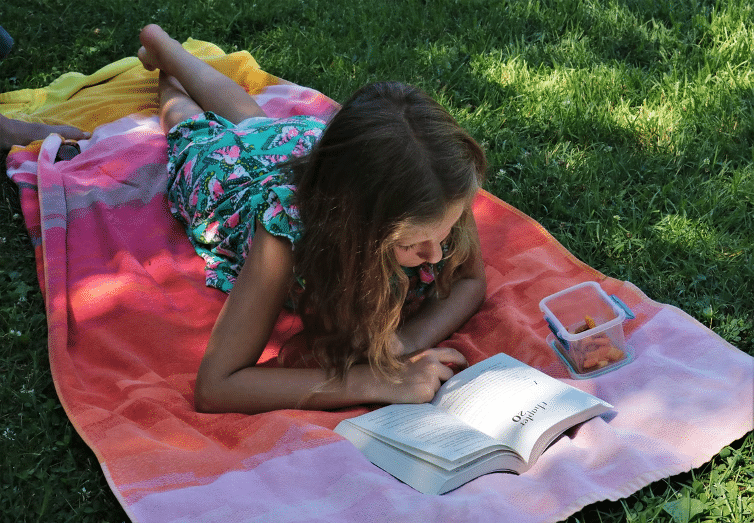What is the Difference Between Phonological Awareness and Phonemic Awareness?
At Reading Teacher, we understand the struggle. When teachers try to learn new reading terms, they’re often faced with a storm of conflicting information, provided by everyone’s favorite yet sometimes unreliable friend: the Internet. We’ll save you the stress by outlining the difference between phonological awareness and phonemic awareness, followed by reading activities that help readers understand the tricky relationship between sounds and words.

What is Phonological Awareness?
Phonological awareness is the ability to manipulate individual units of sound, or phonemes, and understand how they form words. If a reader can blend, separate, add, delete, or substitute sounds, then they are master manipulators - of sound, that is.
What Does It Mean to Manipulate Sounds?
When defining phonological vs. phonemic awareness, we need to know what it truly means to manipulate a sound. Take the word “cat,” for instance: to assess whether a child is able to manipulate the sounds in the word “cat,” you can ask them to blend the sounds /c/ /a/ /t/, without telling them that these three phonemes form the word “cat.”

Phonological Awareness Activities
What is a phonological awareness activity? Any lesson that asks a reader to manipulate sounds by blending, segmenting, adding, deleting, or substituting to form a word. Although we’ll continue with our “cat” example, any age-appropriate sight word can be used to practice the manipulation of sound.
- Back to “cat”: you can directly present the word “cat” to a child and ask them to separate the sounds into /c/ /a/ /t/
- Ask the reader: what’s another that sounds like “cat”? Answers could be “car,” “camp,” “cow,” or any other word that starts with /c/
- Extra tricky: ask them to substitute sounds by giving them a new phoneme to start the word. Instead of /c/, substitute /r/ to sound out “rat”
What is Phonemic Awareness?
Compared to phonological awareness, which focuses on the connection between sounds and the words they form, phonemic awareness concentrates on the individual sounds in spoken language, defined as phonemes.
There are 44 phonemes in the English language - but with 26 letters in the English alphabet, how is this possible? The answer lies in the concept of digraph phonemes, in which two consonants create blended sounds. Sounds such as /sh/ and /ch/ may be composed of two letters each, but they’re still perfectly valid phonemes.

Phonemic Awareness Activities
Because phonemic awareness is so specific, it can be difficult for educators to come up with targeted reading activities to test this skill. Because phonemic awareness assumes that readers are able to hear individual sounds, related activities can push children to become better listeners and interpreters of sound. Some simple ideas include:
- Clap It Out: Sing a song or recite a favorite poem with your child, and clap loudly as soon as you hear a new syllable.
- Noisy Phonemes: Find a “mystery item” in your home that makes a recognizable noise: perhaps a piece of bubble wrap, pot, or another noisy item. Have your child close their eyes, listen to the sound made by the item, and guess what it is, answering in a full sentence! This is an easy phonemic awareness activity for younger and/or more active readers.
How are Phonemic Awareness and Phonological Awareness Similar?
Both phonological and phonemic awareness emphasize sounds instead of letters. A handy rule of thumb - or tongue, in this context! - is that because phonological and phonemic awareness attend to sounds only and not letters, any activities that test these two skills can be done in the dark.
When explaining the differences between phonological awareness and phonemic awareness to a fellow teacher, start with the basics. As tedious as it can feel, this knowledge can take reading teachers, their lesson plans, and their readers much farther than they’d expect.

Take-Aways:
- Phonological awareness refers to the ability to manipulate sounds and use them to form words, while phonemic awareness is hyper-focused on the ability to hear individual sounds.
- Both phonemic and phonological awareness are focused on sound units, not letters.
- Phonological awareness activities ask readers to blend, segment, and otherwise manipulate sounds, whereas phonemic awareness activities highlight the connection between hearing and speaking individual sound units.
Start Teaching Reading for Free Now!
Access Level 1’s four interactive stories and the accompanying supplemental resources to teach elementary students how to read. No credit card is needed. Join the 42,635 teachers and students using our reading program.



















 The majority of children learn how to read at a very young age. However, some children learn at a much later age. This can be frustrating for parents and teachers. You might even consider an additional reading intervention. While all of this is certainly understandable, you must remember that reading is a complex skill.
The majority of children learn how to read at a very young age. However, some children learn at a much later age. This can be frustrating for parents and teachers. You might even consider an additional reading intervention. While all of this is certainly understandable, you must remember that reading is a complex skill.
